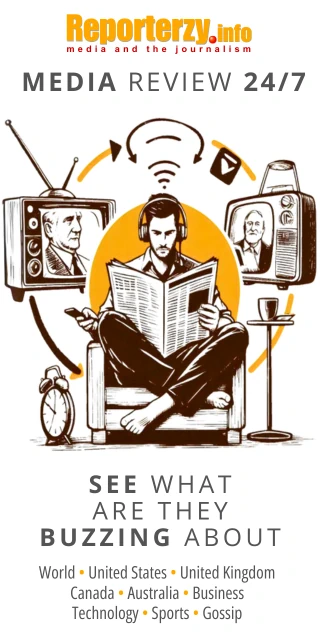Research published in February 2023 by Digital Poland illustrates how effective this channel is for spreading falsehoods:
- Fake news is 70% more likely to be shared.
- As a result, false information spreads six times faster than the truth.
The Most Effective Tool, the Most Resonant Topics
This is an overwhelming difference. The scale of the threat becomes even clearer when these figures are compared to the results of another study, conducted in November 2022 by Wise Rabbit for Clue PR. It examined the sources of information about global events for Poles aged 15-25:
Sources of Information on Global Events for Ages 15-25
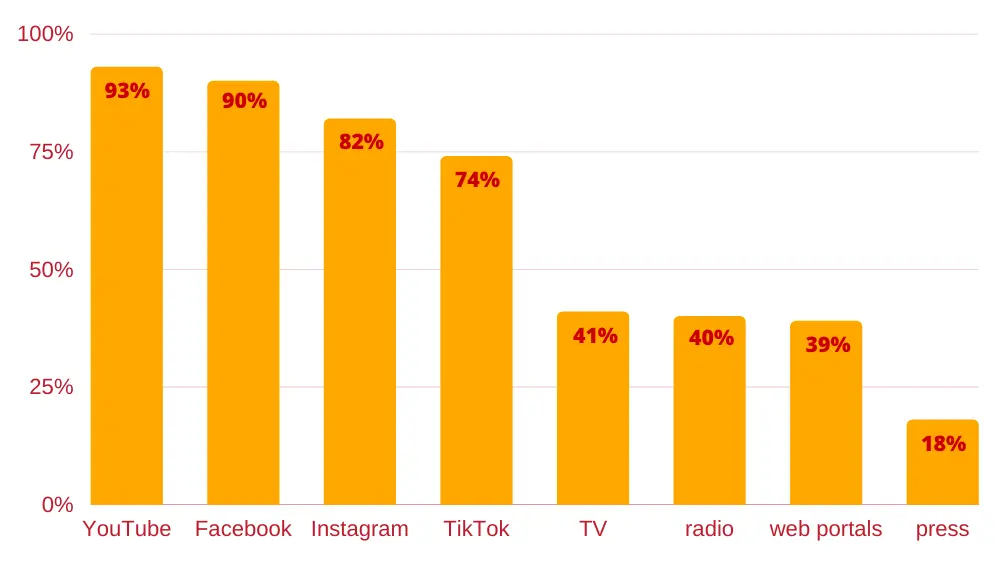 source: Wise Rabbit for Clue PR
source: Wise Rabbit for Clue PRFor older age groups, the proportion shifts slightly in favor of traditional media, but social media still accounts for a significant share in nearly every group. This translates to the next set of data, although these should be taken with a degree of caution. They may be underreported to an unknown extent.
These figures pertain to self-reported encounters with content identified as fake news. At least as perceived and recognized by the audience:
- 82% of people admit encountering it.
- 25% claim to see it several times a month.
- 20% encounter it weekly.
- 15% see it daily.
The data published by Digital Poland are declarative. It is impossible to determine how many false pieces of information bypass the audience`s defense mechanisms and take root in their unconscious. However, we do know the thematic areas from which debunked fake news originates. The most popular topics in recent months are:
- 52% - climate and energy
- 44% - health
- 20% - politics
Anti-Ukrainian Propaganda
The last topic has gained infamous popularity over the past months. It is tied to the war in Ukraine and the refugee crisis caused by Russian aggression. This aspect is regularly examined by the Institute of Media Monitoring and the fact-checking portal Demagog. Recent data from April 2023 reveal the following:
- Polish social media see approximately 60,000 anti-Ukrainian propaganda posts monthly.
- This averages to 80 posts per hour.
- In April 2023, NASK analysts identified about 1,600 accounts responsible for spreading false information.
According to the NASK report, many of these accounts previously flooded the internet with false information about vaccines and the COVID-19 pandemic. Traces often lead beyond Poland`s eastern border.
This thread is closely followed and reported by Debunk.org. Their latest findings from May 2023 reveal:
- In 2022, the Russian Federation allocated 143 billion rubles to propaganda media.
- This amounts to 1.9 billion US dollars.
- The original budget was exceeded by 25%.
SWAMPED. Russian Disinformation Techniques
The EU’s East StratCom Task Force, which identifies disinformation from outside the EU, has outlined the methods used by the Kremlin to spread disinformation globally, including in Poland. These techniques are summarized under the acronym SWAMPED:
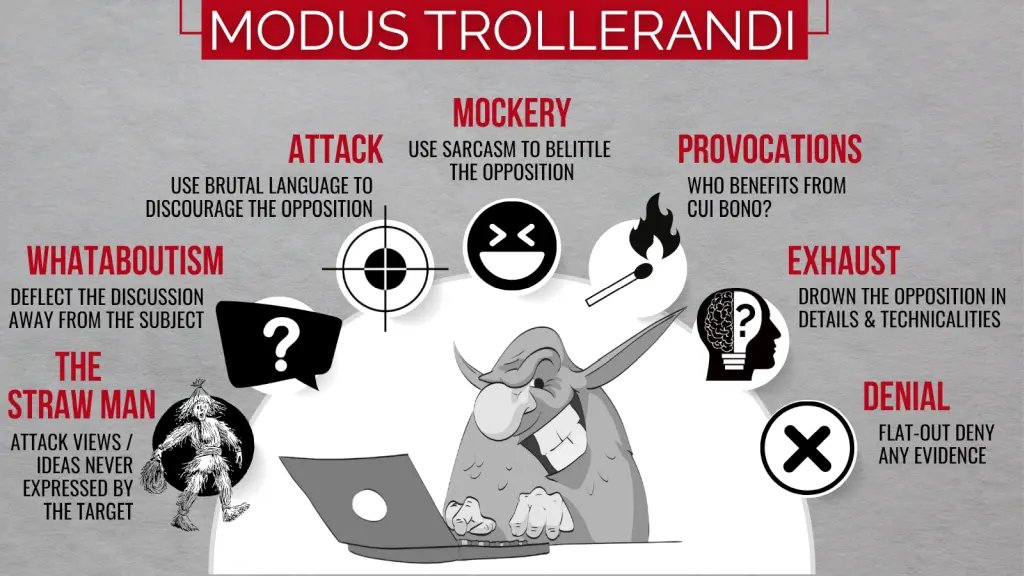 source: EUvsDisinfo
source: EUvsDisinfo- S for Strawmen:
Attack views or ideas, never expressed by the target.. - W for Whataboutism:
Deflecting accusations by changing the subject: "Why aren`t you addressing...?" - A for Attack:
Using harsh language to discourage opponents. - M for Mockery::
Using sarcasm to belittle opponents. - P for Provocations:
Making provocative, baseless claims. - E for Exhaust:
Overwhelming opponents with details and technicalities. - D for Denial:
Flatly deny any evidence.
These techniques share a common trait: they exclude any possibility of dialogue. More about these disinformation techniques can be read at https://euvsdisinfo.eu/modus-trollerandi-part-5-provocations/
How to Defend?
The most common advice for defending against fake news boils down to limited trust, verification, and fact-checking. Confirming the credibility of sources, authors, images, and videos. Following trusted media and visiting fact-checking platforms to verify critical information in the public space.
However, two additional problems arise. First, as consumers, we are not particularly interested in verifying doubtful information. Eurostat data from 2021 highlight this clearly:
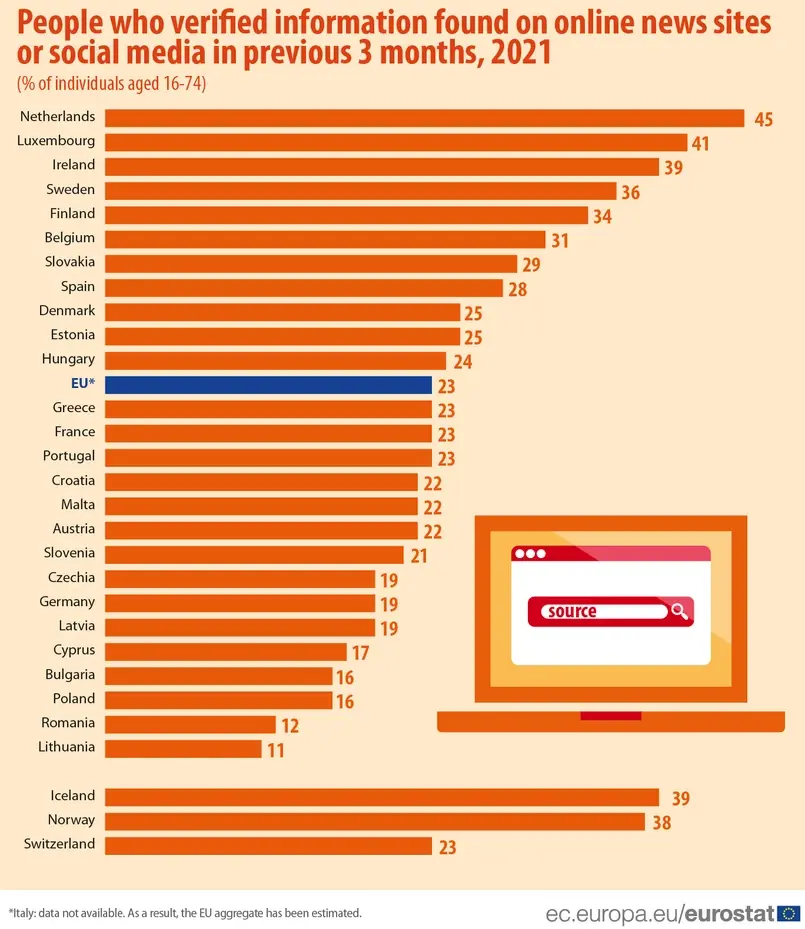 source: Eurostat
source: EurostatOnly one in four EU residents claims to have verified the truthfulness of information found on social media or elsewhere on the internet. In Poland, this percentage is far below the EU average - just 16%.
Trust Lost?
In Poland, there is an additional challenge: a crisis of trust in traditional media. These media should help verify the truthfulness of information but are increasingly seen as sources of fake news themselves. This is often due to political bias or insufficient research, which sometimes makes them victims of fake news.

As a result, Poles` trust in traditional media is at an all-time low. According to the Reuters Institute for the Study of Journalism, nearly 60% of Poles distrust traditional media as a source of information.
Trust in Traditional Media in Poland
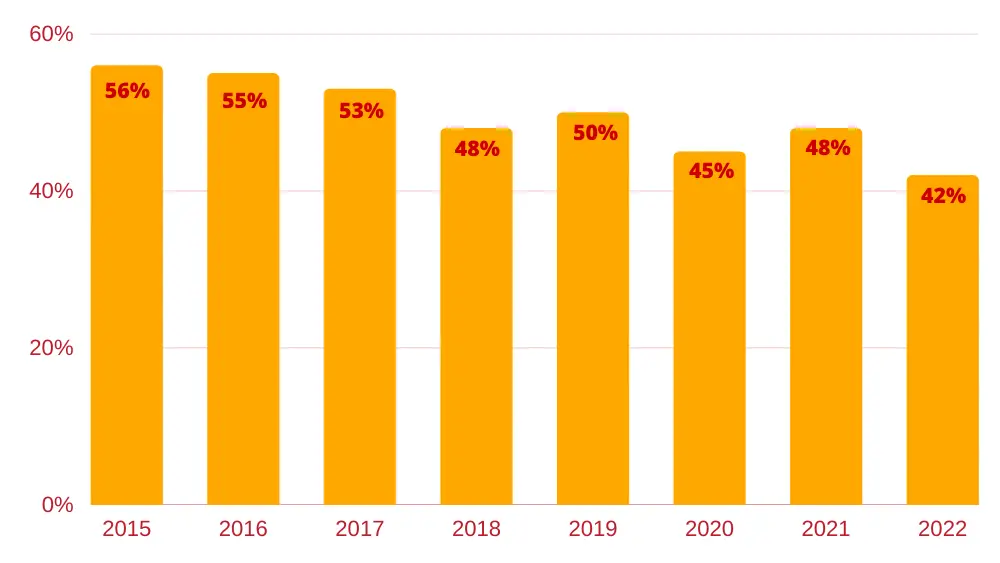 source: Reuters Institute for the Study of Journalism
source: Reuters Institute for the Study of JournalismIs there still hope to win the battle against disinformation? There’s no clear answer. We are at a point where we can only report: Houston, we have a problem! And we’re not even sure if Houston can be trusted - or who they even are....
* * *
* * *
This article is based on materials prepared for the conference MEDIA STUDIES AND PERSPECTIVES 4: Media and Journalism of the Future by the Institute of Journalism and Social Communication at the University of Wrocław. Thanks to the Polish branch of European Journalism Observatory for the invitation to the panel "EUROPEAN MEDIA LANDSCAPE AFTER THE TWO CRISES."
COMMERCIAL BREAK
New articles in section Media industry
Advertising market 2025. Poland, Europe and the World
Marcin Grządka
The global advertising market is growing by 8.8% in 2025 and will reach a value of 1.14 trillion dollars. The industry result in Europe records slightly lower dynamics, at the level of 5.8%. In this comparison, Poland performs clearly above the average. We will record an increase of 8.9% this year and a value of 18.56 billion PLN - estimates WPP Media in the annual report "This Year Next Year".
The print media market 2025. Three global trends
Krzysztof Fiedorek
The market value is 359.53 billion dollars, yet the erosion is visible to the naked eye. The decline for newspapers will amount to -2.3 percent. Despite this, print retains strength: it generates 76 percent of subscription revenues and enjoys 82 percent consumer trust. The future of the industry is defined by hybrid strategies and niche specialization.
Journalism in the age of AI. Why people prefer humans over machines
Krzysztof Fiedorek
Only 12% of people accept news created solely by AI, while 62% prefer those written by humans. At the same time, only 19% notice labels indicating the use of artificial intelligence, while younger audiences ask AI to explain the content to them. These are the findings of the Reuters Institute report on artificial intelligence in media.
See articles on a similar topic:
Disinformation ranks above terrorism as global threat
KFi
According to "International Opinion on Global Threats" by Pew Research Center, a median of 72% of adults across 25 countries view the spread of false information online as a major threat to their country. That number places disinformation at the very top of perceived global dangers.
Safari Surpasses Opera. A New Shift in the Browser Market in Poland
Krzysztof Fiedorek
In the summer of 2024, a historic event occurred in Poland's browser market. In July and August, Safari surpassed Opera on all devices for the first time. Data from the StatCounter report indicates that Apple's browser maintains a steady market share while Opera is gradually but noticeably losing ground.
Clickbait Uncovered. How Online Headlines Evolved Over 25 Years
Krzysztof Fiedorek
Researchers from the Max Planck Institute analyzed 40 million headlines from the past 25 years. They are getting longer, more emotional, and negative, with a clear influence of clickbait style. Even reputable media use strategies and tricks to grab attention.
Hate speech is contagious and leads to harm [EXPERT OPINION]
Karolina Kropiwiec
‘If we are in an environment where certain groups of people are insulted, there is a high probability that we will start using such language ourselves; hate speech is contagious and its consequence is someone's harm,’ says Dr. Michał Bilewicz from the Centre for Research on Prejudice at the University of Warsaw.























